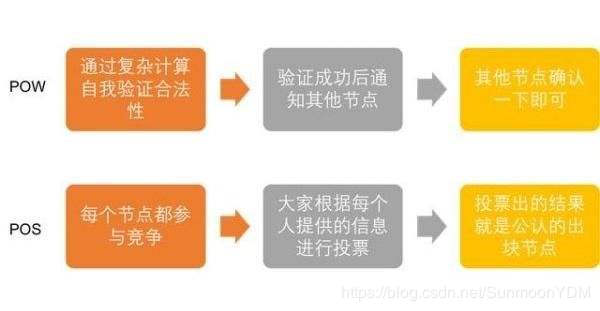Block chain to develop a consensus what the consensus algorithm?
Consensus mechanism is used to solve the consistency problem of distributed systems, its core is under a protocol (consensus algorithm) security, in a limited time, so that is consistent with the specified operating in a distributed network, admitted, It can not be tampered with. In the block chain system, certain consensus algorithm for solving the problem of decentralized multi-party trust.
In fact, simple understanding is agreed. Many scenes in real life is the need to reach agreement. Block chain system, each node must make their own books and books of other nodes consistent. The center of the world, it is almost impossible, because there is a central server exists.
Consensus algorithm has several categories?

In the block chain system, the consensus algorithm through the economic interests of the game, to encourage contributions to the system and increase the cost of evil can not be trusted nodes. Commonly used algorithms such as PoW , PoS , DPOS etc., different algorithms, in fact, different gameplay.
PoW ( Proof of Work , workload proof) - the main representative: the so-called Bitcoin Bitcoin mining is calculated by accounting compete for the right hash in line with the hash value of a currency area a bit block header. This process requires a lot of computing to achieve, simple understanding is computationally intensive steps you're taking (workload), you have a high probability to get billing right through. Including: Bitcoin , Ethereum , Litecoin , Zcash . Advantages: randomness, fairness and good; drawback: energy.
PoS ( Proof of Stake , proof of interest) - the main representative: little money is to get a simple understanding of the probability of accounting in accordance with the right amount of distribution of assets, similar to shareholders in the company. Comprising: the Ethereum-the PoS , Tendermint , Algorand , the EOS DPOS , DFINITY , VBFT . Advantages: attack more expensive, higher performance efficiency; disadvantages: A concentrated.
DPOS ( Delegate Proof of Stake , commissioned proof of interest) - the main representative: EOSPoS improved, resulting in billing by the community's elected board of directors similar shares in the company. Such as: Steemit , the EOS , bitshare advantages: low cost of the transaction, scalable; disadvantages: current partially centralized.
In order to meet different application scenarios, research block chain consensus mechanism focused on the optimization of the system as scalability, operational efficiency, fault tolerance and so on. Block chain in the emerging scenario, consensus will be a variety of mechanisms used in combination, for example, in a hierarchical / slicing scheme, the uppermost layer of the backbone using PoW effectiveness of mechanisms to ensure that the global consensus and used against witches attack, in the range of relatively small slice using PoS or BFT to achieve higher efficiency consensus algorithm. Typical examples include the introduction of the future based on a check Ethernet Manager Square about slicing scheme and Zilliqa the like. Although these programs have not yet verified the floor, but they represent a trend of the future block chain design.
Consensus algorithm development process:
Historically, the consensus algorithm to study the origin of multi-processor computing ; they address the global state of the processor may be malfunctioning (ie become unresponsive) problem. In these cases the communication is synchronous, i.e., by some known time limit.
Later, with the development of telecommunications and computer networks, there have been two other questions: Unknown communication delay and opponents. The former led to some new research synchronous and asynchronous algorithms and create consensus algorithm can tolerate any agent behavior (Byzantine behavior) - the so-called Byzantine fault-tolerant algorithms (or BFT consensus).
With the wide application of the Internet, the problem becomes more serious opponents. If you can identify each agent in a multiprocessor environment or telecommunications infrastructure, then the Internet will not be able to do so in many cases. Therefore, the emergence of a new public (or no license) consensus, consensus algorithms must be an agreement, which is embedded identification and exclusion of Byzantine proxy rules and procedures - as some accompanying mechanisms such agents further reduced Like the ability to participate in economic agreements. Such a system with POW and POS nominal attracted public attention. We will be economic incentives ( BFT- EI ) named these protocols. In many cases, asynchronous and non-permissive consensus requires sacrifice other quality, such as determinism or the ability to apply leadership election scene.
Consensus algorithm:
In general, the consensus algorithm is used to solve the following problems:
· Leader election (select agents in the consensus of all participants, the right to update the state of the global system)
· Atom exchange (the order can not determine the exact sequence of events based on the internal properties of the event)
· State replication (maintenance of all or most of the agents shared global state)
Overall, the mainstream consensus algorithm gradually from PoW turned PoS consensus algorithm, there POW and POS trends mixed, POW fairness and the POS efficiency obtained fusion supplement. But even behind the currency has each encryption's a great consensus algorithm, there is no consensus algorithm is perfect, each with advantages and disadvantages. As more and more blocks chain project, while the consensus algorithm will continue to improve.